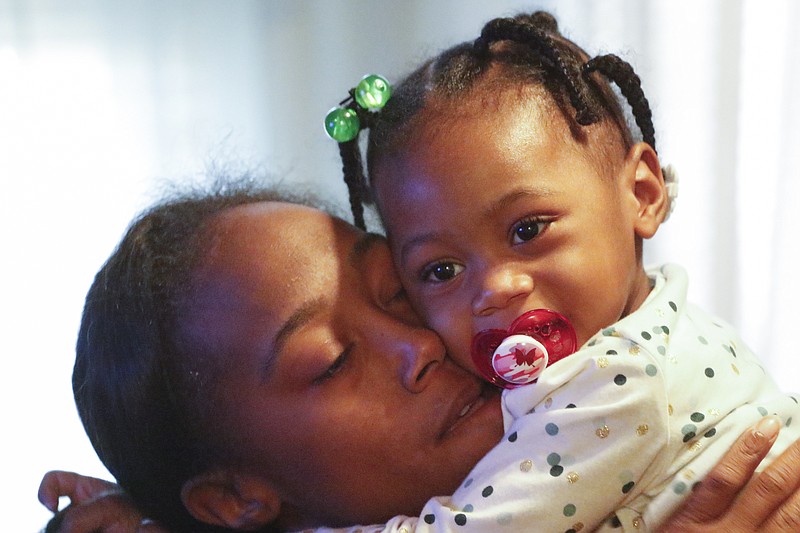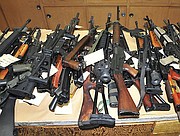IF YOU GO
What: National Gun Violence Awareness Day, sponsored by Third Way ChattanoogaWhen: Thursday, 6-7 p.m.Where: Miller Park
View other columns by David Cook
On the second day of 2016, three people were shot in Chattanooga. Ten days later, a fourth: a teenager, shot while walking home.
A week later, another man is shot, then another.
And another.
Around lunchtime on Jan. 23, a woman is shot; she told police her estranged husband did it. Two days later, a 20-year-old is shot to death while walking down the road. His friend was shot also.
Three days later, another man is shot in the leg. Then another man, shot in the leg. Then a woman and man shot while inside their car.
Then, on the last day of January, another woman and man are shot and killed inside their home.
The woman's son - 5 years old - called 911.
In February, six people are shot, including a 14-year-old boy and a 41-year-old woman.
March begins with a man, 71, is sleeping in his bed; shooters rush in, killing him with a high-powered rifle. Five days later, a man and woman are arguing; he reportedly leaves, returns with a gun, and shoots her twice.
Two days later, a man is shot to death inside his mother's home.
March would remain bloody: males in ski masks shoot a man while he's sitting in his car. Another man is shot while walking down the road; another, shot in the head. A teenager is shot during a nearby argument between a man and woman.
While sitting in her home, a woman is shot by a man in the next room who unintentionally fired his gun.
She is killed.
It continues: a man is shot in the buttocks; another man in the stomach, another in the hip.
A man is shot to death while reportedly trying to rob another.
Then comes April. A father shoots his son. A man is shot during a fight between two women.
A man is shot to death in a parking lot; another man, shot while sitting in his car. Another, walking his dog.
Another, working in his yard.
The shootings happen at any hour: 2 in the morning, 9:30 at night, or even lunchtime.
On April 18, three people are shot in one day. One is a teenager who is killed. Another is 24 and pregnant. The next day, three more people are shot.
Before April ends, five more are shot; one is killed. One man is shot after someone asked him for a cigarette; another is shot outside a grocery store. Another, shot during a fight at a homeless camp.
In early May, a teenager is shot multiple times. A security guard is shot and killed outside a restaurant. Hours later, around sunrise, a woman is shot inside her home. Later that evening, a man is shot for the second time since January. Before midnight, another man is shot.
On May 10, a man is shot and killed. Then, another man shot. Then, a woman shot while walking. Then, another man. Then, another.
Then, three men are shot in one day, including a father and son, who are both killed.
Then a woman whose infant daughter was shot last year was herself shot and killed.
And we haven't even reached June.
Or July.
"Gun deaths are expected to surpass car deaths," The Atlantic declared in 2015.
Each day in this country, according to the U.S. Centers for Disease Control and Prevention, 91 people are killed by gun violence. Suicide. Homicide. Accidents. Domestic violence. Mass shootings, of which there are hundreds each year. On average, nearly 33,000 Americans are killed each year by gun violence. If you were to line up all the men, women and children murdered between 1968 and 2011, their bodies would outnumber all soldiers - 1.4 million vs. 1.2 million - who died in every war America has ever fought, according to the BBC.
This Memorial Day, as we remember victims of war, we should also remember victims of our own internal, civil war.
As with any war, we should ask: how does it end?
"Those of us who are working to reduce gun violence believe that 'resignation' or 'retaliation' are not the only options," said First-Centenary United Methodist minister emeritus Charles Neal.
That other way?
"Reconciliation," Neal said.
Violence never leads to lasting peace; only nonviolence can do that. Gandhi, Christ, King and so many, many others advocated a third way of conflict resolution: not passive do-nothingness, not aggressive revenge, but creative, engaged peacemaking that responds to violence with something much more powerful.
Nonviolence.
"The strongest force in the world," Gandhi once said.
This Thursday, Neal and others are hosting a National Gun Violence Awareness Day at Miller Park; the public is invited to wear orange. Photos of those killed by guns, and a guest speaker whose son was killed, will be part of the event.
The name of Neal's group?
Third Way Chattanooga, which was created after the July 16 shootings, and designed for one reason.
Promoting nonviolence in Chattanooga.
David Cook writes a Sunday column and can be reached at dcook@timesfreepress.com or 423-757-6329.


